Most people spend up to ninety percent of their lives indoors. With that in mind, we believe that design to promote human wellness is critical.
A building designed for occupant wellness can include features like biophilic elements, ergonomic work areas, healthy building materials, and acoustically sensitive and agile spaces that support healthy choices by the end-user. All of these design elements work together to make us healthier and happier.
We believe in designing people-centered spaces by asking the right questions:
- How can the design encourage a healthy lifestyle?
- How can the space provide for greater occupant comfort and well-being?
- How can the space feel welcoming and inclusive for all?
- How can design connect people with place and nature?
- What materials can support a healthy environment?
LIGHTING
Lighting has a significant effect on our visual and circadian systems. Studies have shown that light exposure directly impacts physical and mental health - including sleep-wake cycles, mood swings, and recovery times. Integrating natural and artificial light to create strategies focused on human health, along with lighting levels conducive to visual acuity and comfort, can lead to healthier and more productive environments.
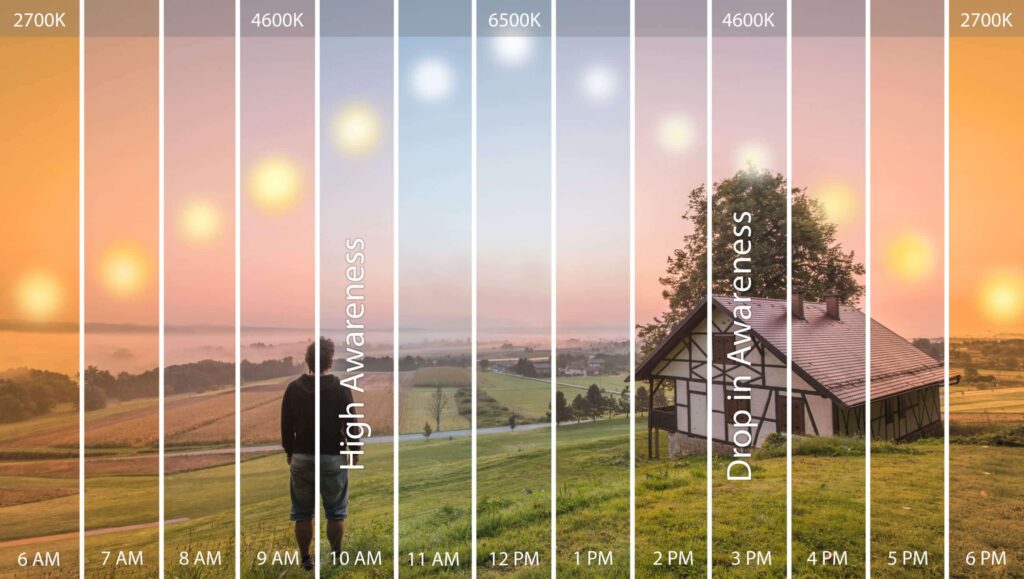
Image credit: The Lighting Practice
LED lighting is a popular energy efficient choice, but additional measures can be considered to maximize the quality of the indoor environment. Lighting that mimics nature’s patterns in both luminosity and color temperature can engage a person’s natural circadian rhythm. By incorporating operable window shades and programmable light fixtures, we can design spaces that feel more natural and restful.
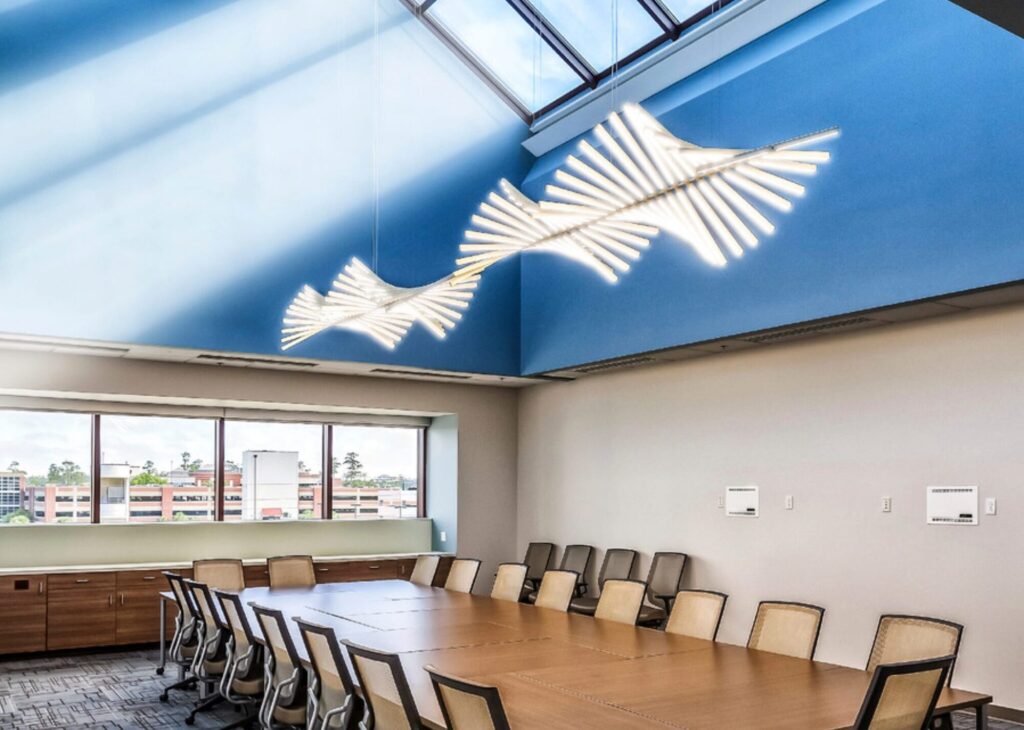
UF Veterinary Medicine Atrium Infill
BIOPHILIC DESIGN
Biophilic design is the practice of connecting people and nature within the built environment. Natural elements such as planters, water features, materials derived from nature, and sunlight infiltration are simple ways to bring the outdoors in. In some spaces where it may be challenging to maintain natural elements inside, nature can also be abstracted through depth, movement, texture, and prominent lines to represent natural features like hills, rivers, or forestry. Art depicting local vegetation and landscape is another simple and effective way to integrate biophilia.
Using natural elements in a space is not only aesthetically pleasing, but it also provides benefits to an occupant's health. Workplaces featuring these design practices have seen evidence of this on their teams. These benefits include lower blood pressure and pulse rate, as well as an overall sense of relaxation by increasing parasympathetic activity. The result is better physical - most notably, cardiovascular - and mental health.
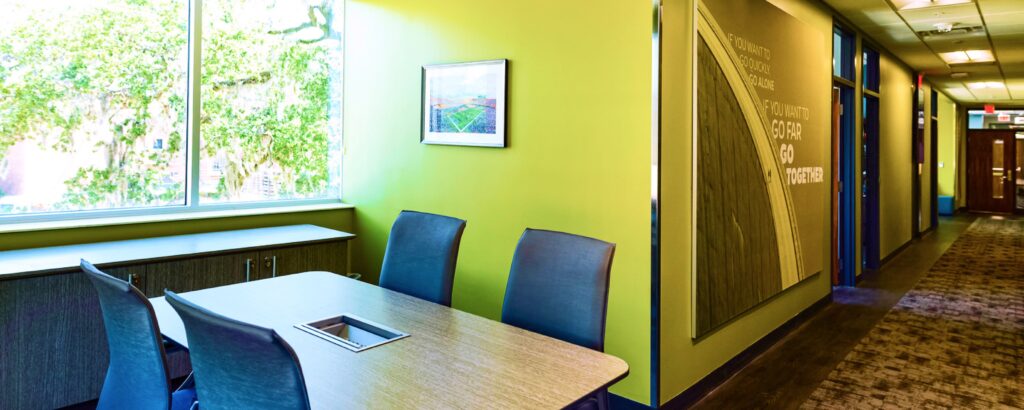
UF Career Connections Center Addition
ACOUSTICS
Noise (unwanted, distracting and intrusive sounds) is the leading cause of disruption in productivity. Design features can help to lessen noise by designating acoustically sensitive areas.
Common noises like traffic and external conversations have been shown to negatively impact health by disrupting sleep patterns, reducing mental acumen, and contributing to hypertension. Discordant noise can lead to high anxiety levels by over-producing cortisol, “the stress hormone.” Noise disruption can be particularly distressing to those who are hard of hearing.
“Sound Mapping” spaces can help prevent noise related disruptions. This practice delineates spaces for different levels of sound: high-traffic zones to include social spaces and noise producing equipment, quiet zones for focused work or privacy, and mixed zones for collaboration or presentation.
Designing for acoustic wellness can also consider the use of sound absorbing elements such as wall panels, ceiling tiles, baffles, and material textures that aid in lessening sound reverberation. Duct silencers installed with HVAC systems, and insulation in between interior walls also contributes to reducing transmission of sound from one area to another.

Infinite Energy Acoustical Ceiling
CULTURE & INCLUSIVITY
In every designed space exists a unique group of people tied together by a similar goal. Design for culture and inclusivity takes into account the cultures and needs of the end users, ensuring that all who inhabit the space feel welcome. Cultures can be represented through art, color, and language of the space, while universal design ensures that spaces are accessible and comfortable to differently abled bodies. Visual, audio, and physical cues, and prominent wayfinding elements and graphics help to create a fully accessible space for all.

FOOD & MOVEMENT
People in the modern day world can become sedentary; our homes and our workspaces can lend themselves to inactivity. Redesigning our workspaces to encourage movement - walking, stretching, and standing - can support more physical activity in our daily routines.
Movement can be encouraged by providing standing desks, areas for exercise, and incorporating activity into the social ethos of a company. This may be as simple as setting time aside to go for a walk as a group while brainstorming instead of sitting around a conference room table, or scheduling team building days that involve varying levels of activity.
A high percentage of people have a tendency to consume a diet consisting of packaged and prepared food. As a result, a lack of vegetables, fruits, and whole grains are consumed. Providing locally sourced, seasonal produce and organic snack options, a designated food prep area and utensils, enables occupants to make convenient, healthier choices.
An outdoor space can also encourage healthy eating and movement. Some workplaces have found success incorporating a community garden to promote physical activity, mental wellness, fresh food choices, and healthy eating habits.

THERMAL COMFORT
Despite technological advancements, research tells us that only 11% of users are comfortable with the temperature in their office spaces. Since thermal comfort is subjective, the key to a comfortable office space can be providing adjustable thermostats where appropriate and adding thermostat sensors in heavily occupied spaces. Conducting thermal comfort surveys to occupants is another great way to determine preferred ambient temperatures in the workspace.
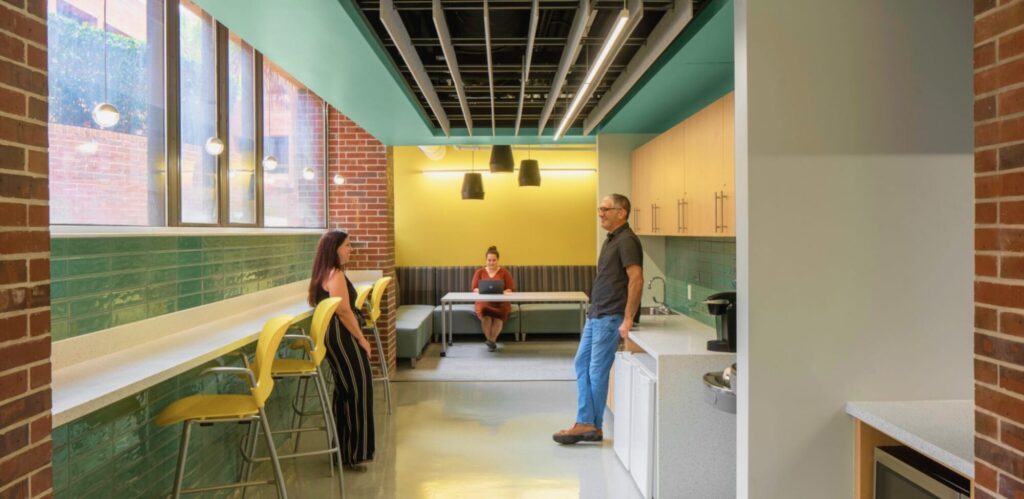
UF Norman Hall Ground Floor Renovation
INDOOR AIR QUALITY
Poor air quality can lead to a number of ailments, including respiratory and cardiovascular diseases, asthma, headaches, and cancer. This can be mitigated by installing operable windows where feasible and including an outdoor air function typically integrated with duct work or air handler system. More attainable methods to improve indoor air quality can include installing a MERV 14 filter (or better), adding sanitizing UVC bulbs in air handlers, and routine particle testing or monitoring. All of these design considerations can help maintain healthier environments and alert building management to potential airborne contaminants.
ECONOMIC IMPACT
Designing for wellness has a positive economic impact for organizations. This can be measured through the following results:
- Reduction of operating costs
- Enhancement of asset value and profits
- Reduction in illness and absenteeism of employees
- Increase in staff retention
- Reduction in mental stress & fatigue in building occupants
- Increase in occupant productivity
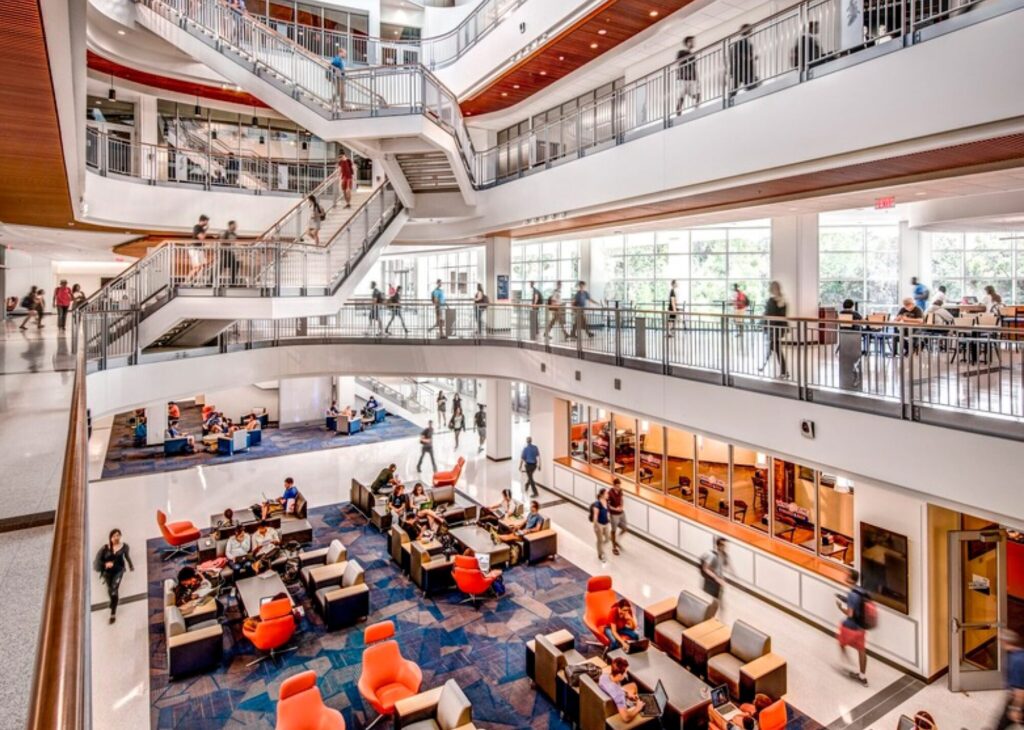
UF Reitz Union Expansion & Renovation
WELLNESS IN THE WORKPLACE
Supporting both physical and mental health of employees is always a priority for organizations. This is especially relevant considering the redefining of a workplace due to the COVID pandemic. Health awareness is more prevalent than it was pre-pandemic. After working from home and avoiding group settings for an extended period of time, returning to a work environment can cause anxiety and stress. Worries of viral and bacterial exposure now compound a person's inherent career and life stressors. Therefore ‘designing for wellness’ has become increasingly important. An organization can support its team’s physical and mental well-being by enacting and promoting simple policies and resources:
Although wellness may not have always been at the forefront of design and architecture, we as designers can lead the way in creating healthier environments and help to set up the rest of the world for success.
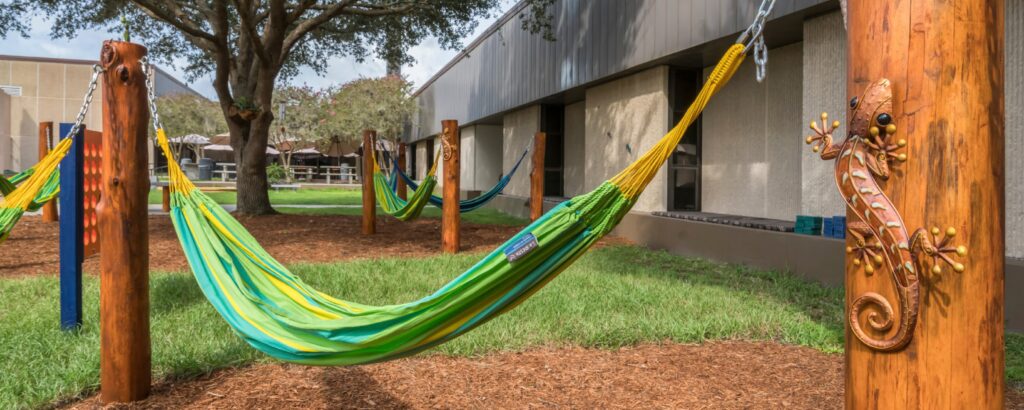
UF Veterinary Medicine Atrium Infill
REFERENCES
Top 5 Tips for the Sound WELLography




No comments.